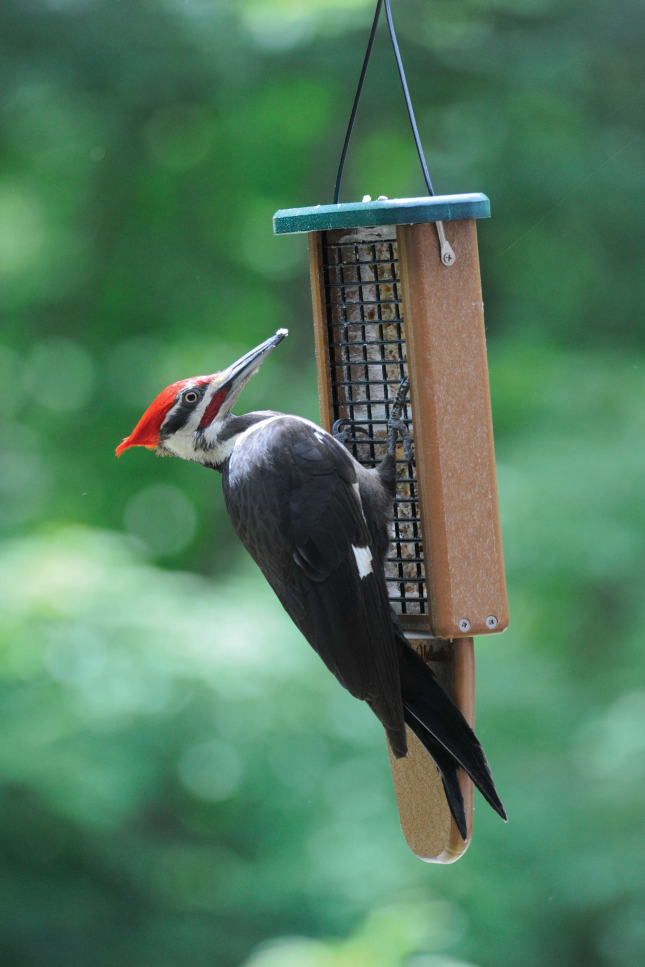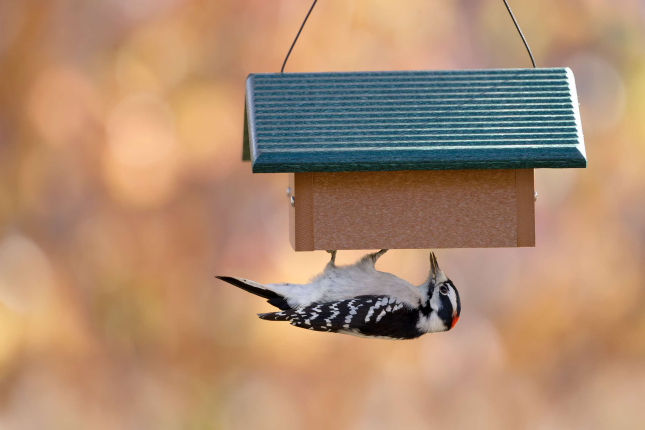Feeding Birds with suet
Suet Feeding is very popular and offers the birds a rich protein source- especially during the colder months of the year. Our SuperSuet has reached our highest level of fats and protein by blending rendered beef fat, mealworms, roasted peanuts, almonds, pecans, walnuts and calcium. Calcium helps support egg and bone growth. Birds can’t get enough of this ultimate suet blend. Recommended for use in cooler temperatures. We offer a no-melt version for warmer temperatures/summer months. If using in warmer temperatures, use in the shade.
The easiest way to start is to use a simple green cage suet feeder or one of the new recycled tail-prop feeders. The green cage feeder is the easiest way to start feeding suet. It's inexpensive and is sure to bring in the birds!
After feeding with a simple green feeder, you may wish to upgrade to a recycled or tail-prop suet feeder. The Downy Woodpecker in the photo below on the left is feeding on one of the recycled tail-prop suet feeders- a great design that is very durable and pretty resistant to squirrel problems. You can also get larger- "double" tail prop feeders that may be easier for the larger Pileated Woodpeckers to use- such as the one below. These feeders are invaluable when it comes to feeding suet as the tailprop does what it's named for- props the woodpeckers tails. The woodpeckers use their tail like an extra leg and the tailprop suet feeders help create a comfortable environment that keeps the woodpecker coming back to your yard.

We also have unique upside-down suet feeders that prevent the ubiquitous starlings from eating all of your suet. Woodpeckers, nuthatches and chickadees have no problems hanging upside down to get at the suet block.

Squirrels, of course, really like suet, and there's now Hot Pepper SuperSuet that you can use to thwart these furry beasts. The birds can't even detect the heat and will happily eat it, but mammals sure can feel it and they don't prefer it.

